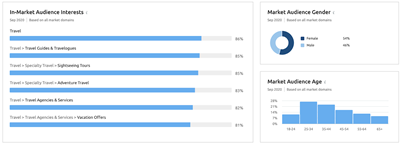Get your free consultation today!
Share with your Colleagues
Categories
ROI Calculator
Moonstone Interactive is the only San Francisco Bay Area web design firm and Internet Marketing expert that offers a free online ROI Calculator
Author: Steve Herz

Writing for the web is a unique craft with its rules and expectations. It's a medium where readers are often impatient, skimming through content to find the information they want. This impatience can make the task of holding their attention a challenging one. To be successful, web writers need to master a few fundamental principles. This article will discuss five: customer-based keyword themes, brand essence, search engine optimization, easy-to-read, and engagement.
The quality of your content determines your reach, engagement, and, ultimately, your success. Web content writing is an art that requires strategy and creativity. This article will explore innovative techniques to help you create captivating web content that will engage your audience, boost traffic, and increase conversions.
Customer-Based Keyword Themes
Customer-Based Keyword Themes are an essential aspect of web content writing. They involve identifying and incorporating keywords that are relevant to your target audience. By understanding your audience's search terms and phrases, you can optimize your content for higher ranking in search engine results pages (SERPs), attracting organic traffic.
 It is crucial to conduct keyword research and choose the right keywords that align with your brand essence and resonate with your target market segments to maximize audience engagement. The right keywords will ensure your intended audience quickly discovers your website when they search for information related to your industry or niche.
It is crucial to conduct keyword research and choose the right keywords that align with your brand essence and resonate with your target market segments to maximize audience engagement. The right keywords will ensure your intended audience quickly discovers your website when they search for information related to your industry or niche.
Furthermore, incorporating customer-based keyword themes into your content helps increase your website's visibility in search engine rankings. Appearing higher in search results leads to higher click-through rates and more engagement.
It's important to note that while keyword optimization is essential, write content in a way that doesn't compromise the user experience. Your content should still be easy to read and provide valuable information to your audience. Balancing keyword optimization with user requirements and providing a seamless user experience is vital to maximizing audience engagement.
Brand Essence
Brand essence is an essential aspect of audience engagement in web content writing. It refers to the core values and characteristics defining and differentiating a brand from its competitors. Creating a consistent brand image is vital for attracting and converting your target audience into loyal customers.
To effectively communicate your brand essence, ensuring that your messaging aligns with your brand's differentiation and promise to your customers is essential. Develop clear and compelling brand messages that resonate with your audience.
 In addition to messaging, other elements such as information architecture, navigation, and content should also fulfill your brand promise. The organization and structure of your website should reflect your brand's values and provide a seamless user experience.
In addition to messaging, other elements such as information architecture, navigation, and content should also fulfill your brand promise. The organization and structure of your website should reflect your brand's values and provide a seamless user experience.
By consistently delivering your brand promise through your content and website design, you can build trust with your audience and enhance audience engagement. This trust will ultimately increase brand loyalty and meaningful interactions with your target market segments.
Search Engine Optimization
In terms of SEO, incorporating your brand essence into your content can also help improve your website's visibility in search engine rankings. Using relevant keywords that align with your brand and target audience can increase your position in search engine results pages (SERPs) and grow organic traffic.
Creating a consistent brand image is vital for maximizing audience engagement. By effectively communicating your brand essence through messaging, information architecture, navigation, and content, you can build trust with your audience, improve SEO visibility, and drive meaningful interactions.
 Including keywords in your content is only one part of the equation. You must also optimize your website and content for search engine algorithms like Google's AI-driven algorithm. This optimization will ensure that your content is easy to find and read as it resonates with your personas.
Including keywords in your content is only one part of the equation. You must also optimize your website and content for search engine algorithms like Google's AI-driven algorithm. This optimization will ensure that your content is easy to find and read as it resonates with your personas.
In summary, customer-based keyword themes are vital in web content writing. They help improve search engine visibility, attract organic traffic, and enhance audience engagement. Relevant keywords in your content increase your chances of reaching your target audience and driving meaningful interactions.
Easy to Read
When writing web content that is easy to read, follow these principles.
- Use straightforward language: Web readers often seek quick and easily digestible information. Avoid using complex sentences and jargon. Keep your language simple and straightforward to ensure your content is easily understood.
- Use active voice: Active voice makes your writing more direct and engaging. It helps readers understand who is doing what. For example, instead of saying, "The product was purchased by the customer," you can say, "The customer purchased the product."
- Avoid ambiguity: Be specific in your descriptions and explanations. Ambiguity can confuse readers. Provide clear and concise information to simplify your message.
By implementing these tips, you can create web content that is easy to read and understand, ultimately enhancing audience engagement and improving the user experience on your website.
Engagement
Engaging content compels the user to get more information, gaining more appreciation of your product, services, and differentiation. Use the proven principles for digital content engagement to enrich the user experience.
Easy-to-Use Navigation
Easy-to-use navigation is a crucial aspect of web content writing. Providing a seamless and user-friendly experience is vital in maximizing audience engagement. Users expect to find information quickly and navigate through the pages effortlessly when they visit your website.
To ensure easy navigation, you can follow these tips:
- Clear and intuitive menu: Design a menu that is easy to understand and navigate. Use concise and clear labels for each menu item, and organize them logically.
- Consistent layout: Maintain a consistent format throughout your website. Keep the placement of navigation elements, such as menus and buttons, consistent across all pages. Consistency helps users quickly locate important information.
- Breadcrumb navigation: Implement breadcrumb navigation to help users understand their location within the website hierarchy. Breadcrumbs provide a trail of links, making it easier for users to backtrack or navigate to related pages.
- Search functionality: Include a search bar on your website to allow users to find specific information quickly. Make sure the search bar is prominent and accessible from every page.
- Mobile-friendly navigation: Optimizing your website for mobile navigation is essential with the increasing use of mobile devices. Apply responsive design techniques to ensure your navigation is easy to use on smaller screens.
Implementing these strategies can enhance the user experience and make your website more engaging for your target audience.
Compelling Headlines
Compelling headlines are essential for capturing readers' attention and drawing them into your content. Here are some principles for creating effective headlines:
- Use action words: Start your headline with words that grab the reader's attention. For example, instead of saying "Tips for Writing Headlines," you could say "Unlock the Secrets of Writing Compelling Headlines."
- Be specific: What readers can expect from your content. For example, instead of saying, "How to Improve Your Writing Skills," you could say, "Master the Art of Writing with These Expert Tips."
- Create curiosity: Spark curiosity in your headlines to make readers want to learn more. For example, instead of saying "10 Ways to Boost Your Productivity," you could say "Discover the Surprising Secrets to Supercharge Your Productivity."
- Keep it concise: Keep your headlines brief. Aim for around 6-8 words to make it easily scannable and memorable.
- Use numbers: Including numbers in your headlines can make them more appealing and attention-grabbing. For example, instead of saying "Ways to Improve Your SEO," you could say "7 Proven Ways to Boost Your SEO Rankings."
Remember to optimize your headlines for SEO by incorporating relevant keywords. Keywords will help elevate your search engine rankings and attract more organic traffic to your website.
Incorporate multimedia
Include multimedia elements, such as videos, images, and interactive features, in your web content to enhance audience engagement significantly. Here are some tips for incorporating multimedia:
- Use relevant visuals: Choose images and videos that are relevant to your content and support your message. Visuals should clarify and enhance the information you are conveying.
- Optimize file sizes: Large multimedia files can slow down your website's loading speed, negatively impacting user experience. Optimize your videos and images by compressing them without sacrificing quality. Compressing images will ensure that your content loads quickly and smoothly.
- Provide captions and alt text: Captions and alt text are essential for accessibility and SEO purposes. Captions help to provide additional context for images and videos. At the same time, alt text describes the content of the media for users who are visually impaired or have pictures disabled. Be sure to include relevant keywords in the alt text to improve SEO.
- Embed interactive elements: Interactive elements such as quizzes, polls, and infographics can actively engage your audience and make your content more interactive. These elements can encourage social sharing and increase users' time on your website.
Remember to optimize your multimedia elements for SEO by including relevant keywords in file names, captions, and alt text. Alt Text will help search engines understand the content of your media and improve your visibility in search results.
Calls to Action
Calls to action (CTAs) are essential elements in web content writing, as they guide and encourage users to take a specific action. They can help increase audience engagement and conversions.
When writing CTAs, keep the following tips in mind to ensure maximum audience engagement and to get users to take the desired action you're aiming for. Here are five tips for incorporating effective CTAs into your web content:
- Be Clear and Direct: Ensure your CTAs are concise and communicate what you want the user to do. Use strong action verbs that create a sense of urgency or excitement.
- Place CTAs Strategically: Position your CTAs in prominent locations on your web page, such as at the end of a blog post or in a sidebar. Consider using eye-catching buttons or banners to make them stand out.
- Match CTAs to User Intent: Tailor your CTAs to align with the goals and interests of your target audience. For example, if you're writing a blog post about a specific product, include a CTA that directs users to learn more or make a purchase.
- Offer Value: Give users a reason to click on your CTAs by offering something valuable in return. An offer could be a free download, a discount code, or access to exclusive content.
- Test and Optimize: Monitor the performance of your CTAs and make adjustments as needed. A/B testing different variations can help you identify which CTAs are most effective in driving user engagement.
 Remember, incorporating CTAs into your web content is an ongoing process. Continuously analyze and refine your approach to maximize audience engagement and achieve your desired goals.
Remember, incorporating CTAs into your web content is an ongoing process. Continuously analyze and refine your approach to maximize audience engagement and achieve your desired goals.
In conclusion, successful web writing is all about meeting the needs and expectations of your readers. You can create easy-to-read, informative, and engaging content by focusing on clarity, brevity, and engagement. If you need help writing your website content, contact us for a free consultation.


